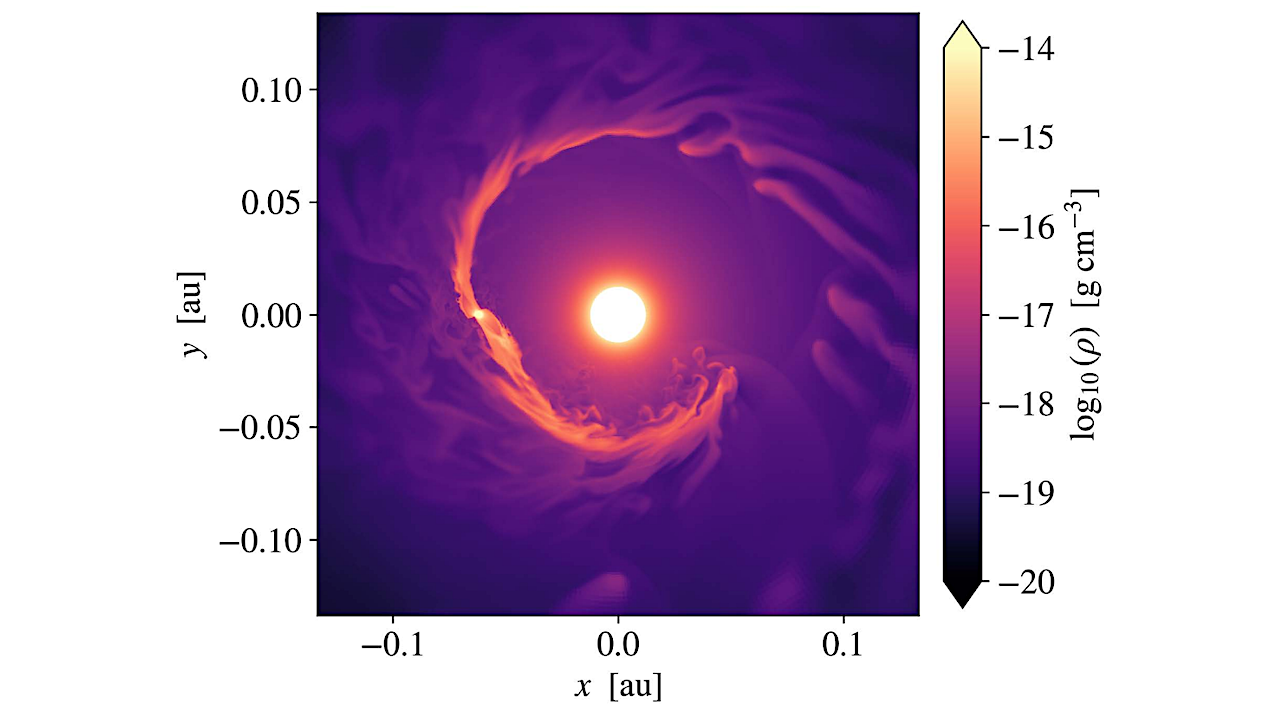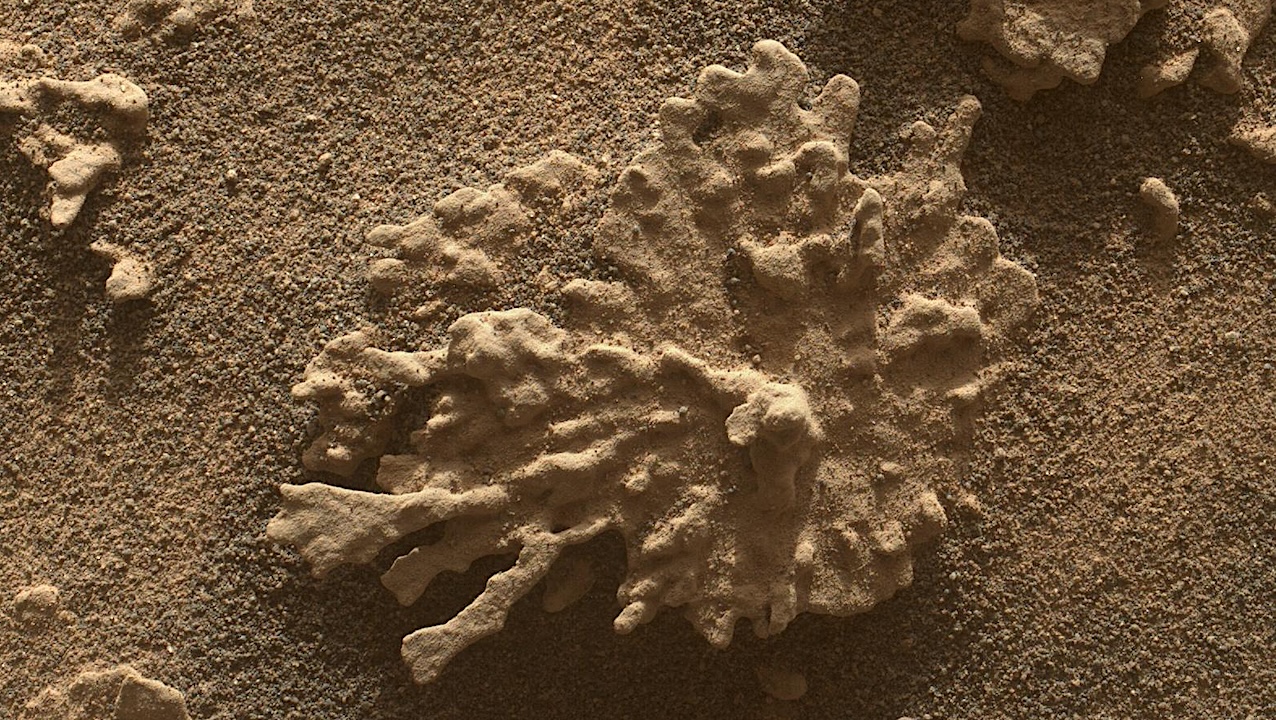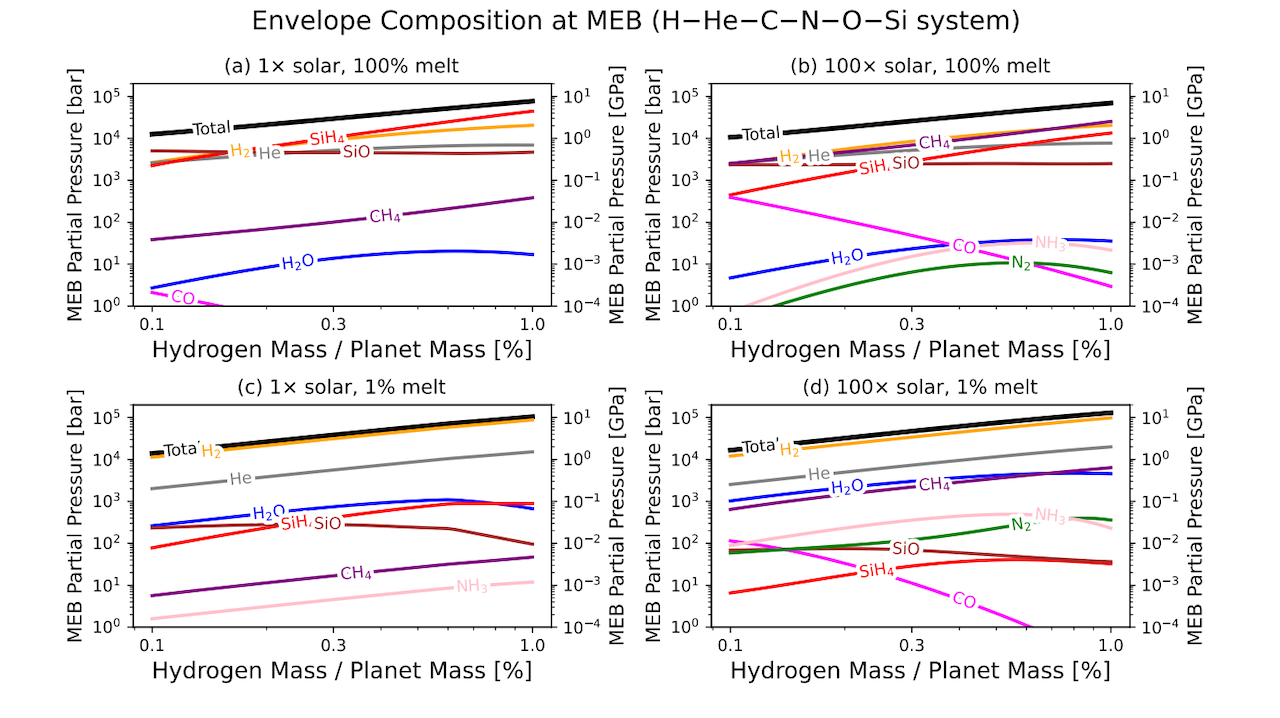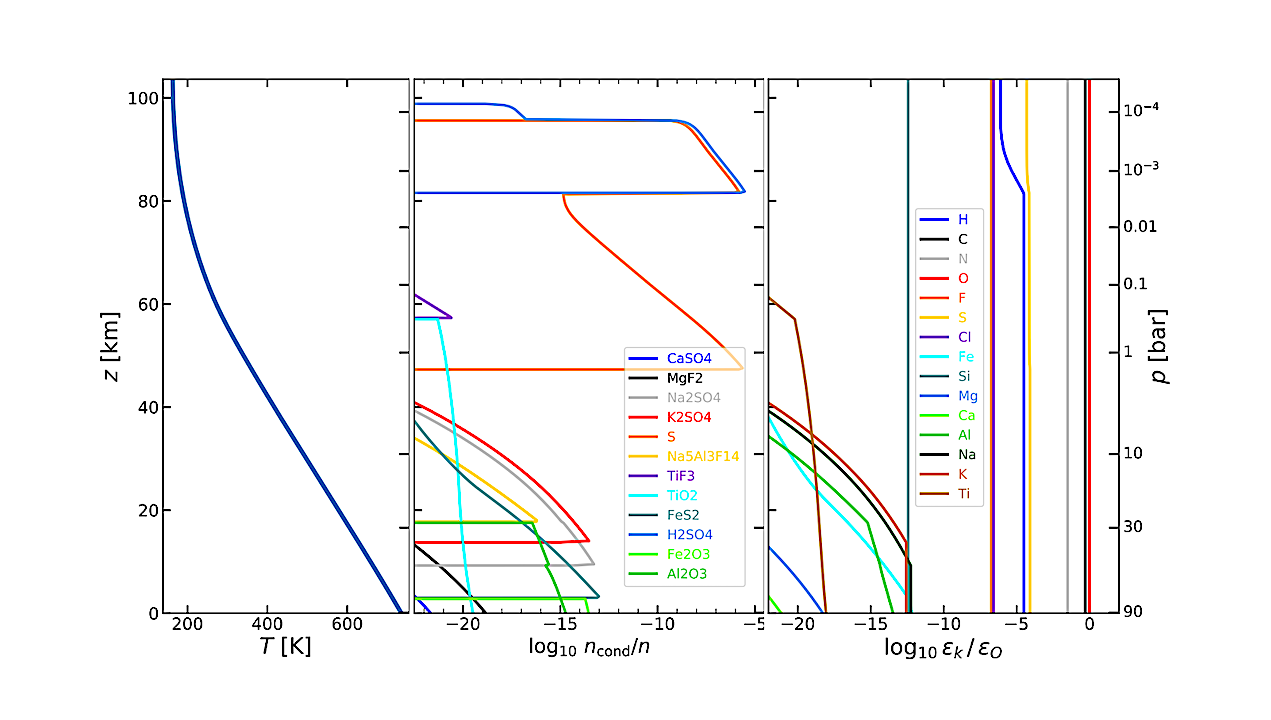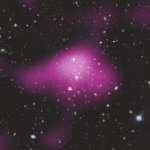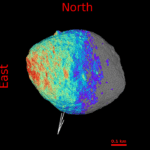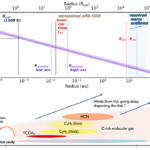3D hydrodynamic simulation of atmospheric escape from Ref. 8, for a system similar to HAT-P-67 b. Figure 2a shows the gas density. The star is in the center of the
Astrobiology34- Page
NASA’s Curiosity Mars rover used its Mars Hand Lens Imager (MAHLI), a camera on the end of its robotic arm, to view this wind-eroded rock shaped like a piece of
NASA ID: iss073e0545092 iss073e0545092 (Aug. 26, 2025) — larger image NASA astronaut and Expedition 73 Flight Engineer Zena Cardman works inside a portable glovebag aboard the International Space Station’s Harmony
The structures and relative zero-point-corrected energies (in kJ/mol and kT-equivalent temperature) of the four most stable conformers of 3-hydroxypropanal. The dipole moments are listed as µa/µb/µc. The point group of
Envelope composition in the H–He–C–N–O–Si chemical system of TOI-421b (𝑅MEB = 1.65𝑅⊕, 𝑅𝑃 = 2.64𝑅⊕, 𝑀𝑃 = 6.7𝑀⊕, 𝑇MEB = 3000 K) as a function of H mass fraction. Elemental
The recent discovery of the third known interstellar object (ISO), 3I/ATLAS, has brought about another round of debate on whether these objects could potentially be technological in origin. Everything from
Scientists believe giant impacts — like the one depicted in this artist’s concept — occurred on Mars 4.5 billion years ago, injecting debris from the impact deep into the planet’s
Left: Assumed temperature/pressure structure of the Venus atmosphere. Centre: The concentrations of condensed units ncond/n that deposit and are removed from the model when advancing to the next atmospheric height.
A member of the space crop production team prepares materials for Veggie seed pillows inside the Space Systems Processing Facility at NASA’s Kennedy Space Center. NASA/Cory S Huston When the
-
 012024 in Review: Highlights from NASA in Silicon Valley
012024 in Review: Highlights from NASA in Silicon Valley -
 02Panasonic Leica Summilux DG 15mm f/1.7 ASPH review
02Panasonic Leica Summilux DG 15mm f/1.7 ASPH review -
 03How New NASA, India Earth Satellite NISAR Will See Earth
03How New NASA, India Earth Satellite NISAR Will See Earth -
 04And Thus Begins A New Year For Life On Earth
04And Thus Begins A New Year For Life On Earth -
 05Astronomy Activation Ambassadors: A New Era
05Astronomy Activation Ambassadors: A New Era -
06SpaceX launch surge helps set new global launch record in 2024
-
 07Space Force plans new ‘Futures Command’ amid pressure to speed up modernization
07Space Force plans new ‘Futures Command’ amid pressure to speed up modernization


